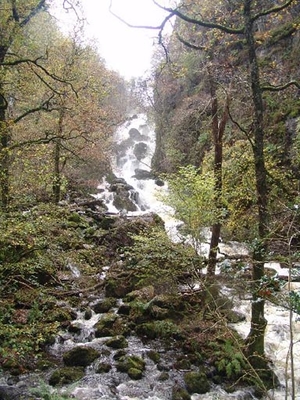n049

The Marshalls were intimates of the Wordsworths, Jane Marshall (née Pollard) being
one of Dorothy’s oldest friends. According to a Ph.D. thesis by Derek Denman, John
Marshall purchased lands in the Buttermere, Crummock, and Loweswater area from 1814
onwards. Owen and Smyser cite an apposite letter, dated 12 July 1816, from Sarah Hutchinson
to Thomas Monkhouse: “William and I spent three days, the week before last, with Mr
Marshall at Scale Hill, Lowess Water, Buttermere, & Crumock [sic], viewing his estates
and manor there, and planning his proposed plantations and Improvements. He is going
to plant very largely by the side of the two last lakes—and, as he will only plant
native wood, and in no wise sacrifice beauty to convenience, we expect that his labours
will not only be profitable but ornamental.”
Kirkstone Pass, which connects Ambleside to Patterdale, is the Lake District’s highest
paved road, topping out at 1,489 feet (454 meters). The route is the subject of “Ode:
The Pass of Kirkstone,” which appears later in the Guide.
The yew tree survives, and it now stands nearby the Old Church Country Hotel (near
Watermillock). The site Wordsworth mentions should not be confused with Old St. Martin’s
Church, Martindale, which still stands and boasts its own ancient yew.
The “new” chapel mentioned by Wordsworth has since been replaced by a building constructed
in 1881 (All Saints Church, Watermillock). However, the tower at the building’s west
end dates from the 1550s. Bishop Owen Oglethorpe, who consecrated the fifteenth-century
building, was the lone clergyman willing to crown Elizabeth I in 1559 because of her
public Protestantism. He came to regret that decision. Queen Elizabeth imprisoned
him months later, and he died a religious martyr. Photo: Bob Jenkins, Wikimedia Commons.
Also known as Saint Bede (c. 673–735), the monk often called “the Father of English
History.” His mention of Dacre (“Dacore”) appears in his Ecclesiastical History of England, chapter 32. At that time, Bede reports, the stream had a monastery beside it.